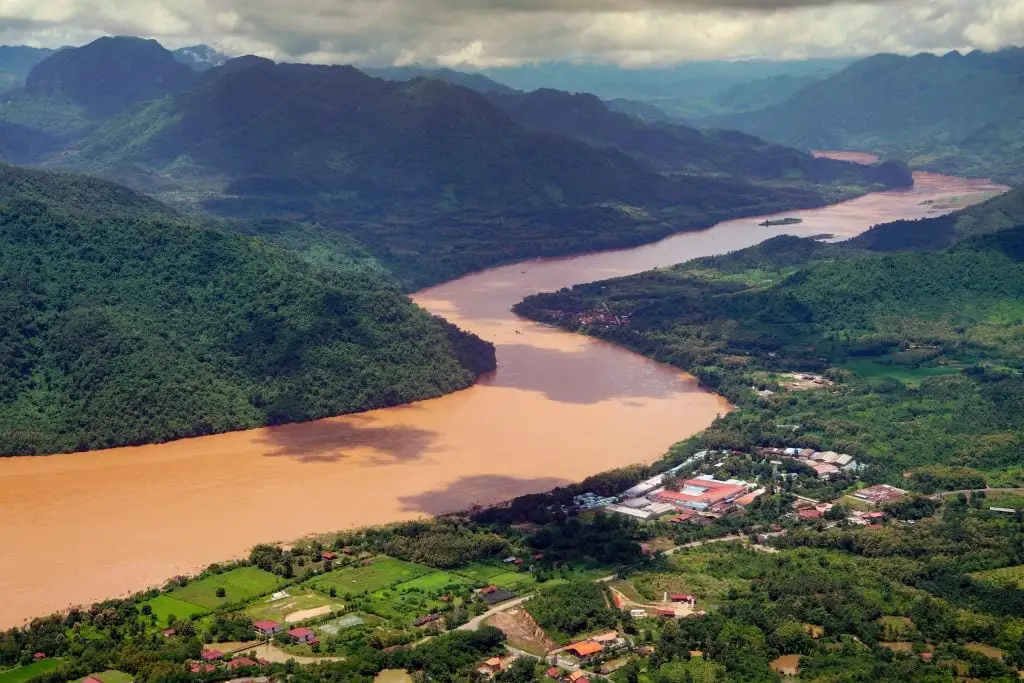Asia is home to some of the world’s greatest rivers—lifelines that shape cultures, economies, legends, and ecosystems. In this comprehensive guide, we’ll explore the five main rivers in Asia, detailing their length, drainage, significance, and role in shaping history.
1. Yangtze River
Length: ≈ 6,300 km (3,915 mi)
Origin & Course: Rises from the Tibetan Plateau’s Tanggula Mountains, flows east across China, and empties into the East China Sea near Shanghai .
Significance:
- Longest river in Asia and 3rd longest globally
- Basin supports over 400 million people, contributing ~20 % of China’s GDP
- Site of the world’s largest hydroelectric project—the Three Gorges Dam
- Ecologically rich, though facing pollution and habitat pressure
2. Yellow River (Huang He)
Length: ≈ 5,464 km (3,395 mi)
Origin & Course: Begins in Qinghai Province, crosses six provinces and autonomous areas, and drains into Bohai Gulf .
Significance:
- Known as “China’s Sorrow” for its devastating floods
- Cradle of ancient Chinese civilization
- Critical for agriculture, though heavily managed for flood control
3. Mekong River

Length: ≈ 4,909 km (3,050 mi)
Origin & Course: Rises in Tibet, crosses six countries—China, Myanmar, Laos, Thailand, Cambodia, Vietnam—and empties into the South China Sea .
Significance:
- Southeast Asia’s longest river, with one of the world’s richest freshwater ecosystems
- Supports major fisheries and agriculture; vital trade route for multiple nations
- Under environmental stress due to damming, climate variability, and shifting water flows
4. Ganges River
Length: ≈ 2,525 km (1,570 mi)
Origin & Course: Formed at Devprayag (Uttarakhand, India) from Bhagirathi and Alaknanda rivers; flows through North India and Bangladesh, then joins the Brahmaputra and Meghna to form the world’s largest delta .
Significance:
- Sacred river worshipped as the goddess Ganga in Hinduism
- Basin supports ~250 million people across India and Bangladesh
- Discharge ranges from ~16,600 to ~70,000 m³/s—part of the world’s 2nd-largest river system
5. Brahmaputra River
Length: ≈ 2,800 km (1,740 mi)
Origin & Course: Starts near Mount Kailash in Tibet (Yarlung Tsangpo), flows through Arunachal Pradesh and Assam (India), into Bangladesh where it merges with Ganges–Meghna .
Significance:
- Among the world’s top 10 rivers by discharge
- Seasonal floods vital to fertile agriculture, but also hazardous
- Prone to glacial melt, floods, and dam-related geopolitical pressures
Why These Five Matter
Here’s a comparative snapshot:
| River | Length (km) | Basin | Discharge | Key Role |
|---|---|---|---|---|
| Yangtze | 6,300 | Economic powerhouse, eco hotspot | ~1,000 km³/year | Industry, irrigation, transport |
| Yellow | 5,464 | Cradle of civilization | High floods | Agriculture & heritage |
| Mekong | 4,909 | Biodiversity, multi-country | Rich fisheries | Regional trade |
| Ganges | 2,525 | Religious & cultural icon | Up to 70,000 m³/s | Spiritual, livelihood supply |
| Brahmaputra | 2,800 | Flood-frequency basin | ~50% of G-B-M | Agriculture, flood control |
FAQs About What are the 5 main rivers in Asia
Q: Are there more than five major rivers in Asia?
A: Yes, including the Irtysh, Indus, Ob, Yenisei, and Salween, all exceeding 2,600 km—but our focus is on those with greatest geographic, economic, and cultural impact.
Q: Why not include the Indus or Irtysh?
A: The Indus (~3,610 km) supports agriculture and ancient civilizations, yet its reach is more regional compared to giants like the Ganges–Brahmaputra system.
Final Word
The Yangtze, Yellow, Mekong, Ganges, and Brahmaputra are Asia’s true giants—rivers that carve landscapes, nurture economies, and shape cultures. By blending factual richness, What are the 5 main rivers in Asia.










